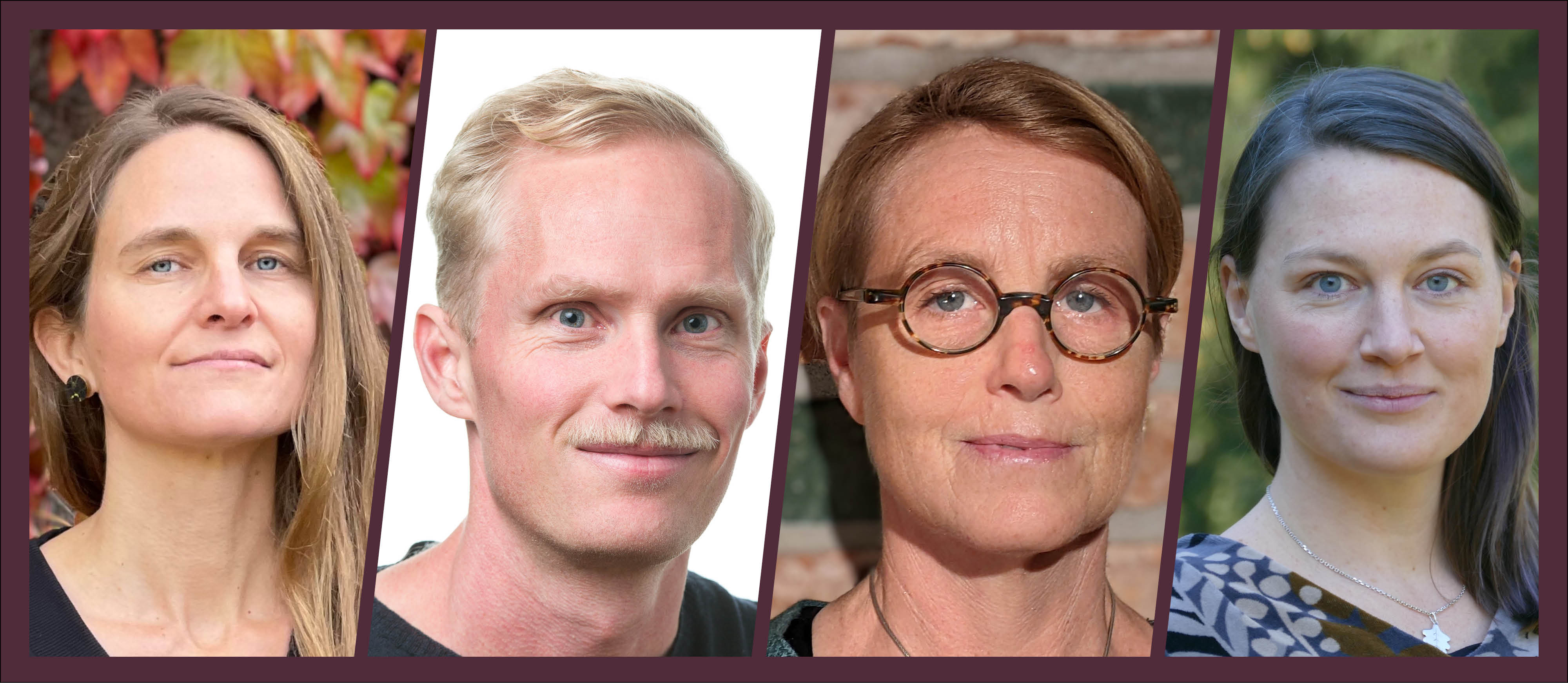Contact
The internal editorial office

There are many ways to work with research communication towards target groups like municipalities, county administrative boards and other authorities. Colleagues at the Faculty of Landscape Architecture, Horticulture and Crop Production Science (LTV) are sharing their experiences and best tips.
Communication is often part of the research itself, for Lina Berglund-Snodgrass, researcher at the Department of Landscape Architecture, Planning and Management and from 1 November also director of the SLU Think Tank Movium. This may involve arranging workshops and conversations with and between municipal officials on various issues or themes.
“I and my colleagues think that's the best way. It's time-consuming, but we think it's important.”
“Those of us who work with applied research, as many of us do at SLU, need to spend quite a lot of time in our studies in practical reality, not least to be able to understand the different challenges and dilemmas faced by civil servants in relation to different issues. In this work, many contacts are created that you can take advantage of when you then want to reach out with important results. So take care of your contacts and nurture them, that's probably the most important tip I can give,” says Lina Berglund-Snodgrass.
Lina Berglund-Snodgrass also works with traditional communication and compiles the results in popular science reports and the like.
“But it's more unclear how much they're used,” she says. We disseminate in our own channels and networks, but the very best thing would have been to also enlist the help of SLU’s external collaboration specialists or others who are tasked with running networks and the like.
“Communication with officials who work in municipalities can take place on a scale ranging from 'one-way communication', disseminating knowledge through lectures or different types of writings, to more co-creative processes where the researcher is part of an ongoing process in the municipalities and may be involved in arranging workshops or seminars on different themes. What is best depends on the question or purpose of the research or communication, and I think it's important to point out that it's not about either/or, but both are important and fulfil different functions,” says Lina Berglund-Snodgrass.
Harald Klein, coordinator of Movium Partnership and SLU's environmental monitoring and assessment programme Built Environment, is a member of Lund Municipality's Climate Policy Council. The council will work for good communication, inclusive dialogue and in-depth cooperation between Lund Municipality and Lund University as well as SLU on the climate issue in order to take advantage of the knowledge available at the universities.
To think about how to reach out with knowledge to officials and politicians and how to formulate yourself. These are some important issues to consider in collaboration with municipalities, says Harald Klein.
“It's often easier to communicate knowledge to officials who are the experts in the political organisations,” says Harald Klein.
When it comes to Lund Municipality's Climate Policy Council, there is an interest from politicians to take part in the council's knowledge, which has been done through a meeting with the Municipal Executive Board's presidium and the submission of a report to the Municipal Executive Board.
“We strived to make the report clear and relatively easy to read. In one of the focus areas, which was circular economy, the Council's expert then participated in a workshop with politicians.”
Malin Hultberg is a researcher at the Department of Biosystems and Technology and one of SLU’s external collaboration specialists in the area of horticulture. She points out that target groups such as municipalities, county administrative boards and other authorities are complex organisations with many different tasks.
“That's why it's very important to be well prepared and have thought about who to contact. For example, you can start by asking colleagues if there is anyone who already has contact with that organization. It's also good if you've condensed what you want to say so that it's concise and clear,” she says.
Märit Jansson, researcher at the Department of Landscape Architecture, Planning and Management, is one of SLU’s external collaboration specialists in the field of urban environments. She also points out that municipalities are complex organisations and that many types of communication may be required to reach out.
“Several issues we work with require commitment from several municipal administrations, so it is a great advantage if all of them are represented at conferences, lectures or meetings where researchers communicate.”
In order to have an impact, it is also valuable to investigate the challenges that the municipalities face, so that it is possible to adapt the communication to the target group, she says.
“Of course, it's best if it's possible to have two-way communication about challenges and ways forward. Another tip is to find enthusiasts and key people within municipalities to collaborate with to facilitate communication,” says Märit Jansson.
She also advises getting communication and collaboration going with authorities, county administrative boards and others by asking people if they want to be part of reference groups for projects where their perspectives are relevant. Or maybe apply for funding together for a small feasibility study on something to develop?
“It may mean a small commitment for them, but the contact that is established by asking can add value to the project and also lead to continued communication and collaboration,” says Märit Jansson.
“Sometimes it's hard to know which channels those who work in municipalities actually use. We may need to find out,” says Märit Jansson.
In a previous research project, she and her colleagues therefore began to ask the municipal officials they interviewed where they get information and where they would like to read about the project's results.
“It turned out to be a broad palette of magazines and other channels, but at least it gave us a picture of where we should be seen,” says Märit Jansson.
In order to reach out with research news, she also advises writing press releases, something that SLU's press office can help with, for example. Make sure that everything feels right with the press release and that it is comprehensive enough to be used by newspapers and others directly, she advises.
“My experience is that news sometimes gets a lot of attention, so it's important to be prepared if a lot of journalists get in touch and ask for interviews and pictures. So, make sure to have some space in your schedule for interviews if you're making a press release. Also remember to always ask to read texts before they are published in different media, as this is usually something that goes wrong,” says Märit Jansson.
“And for those who communicate directly with a municipality – be patient! It can take time to find common issues or solutions, sometimes months and years, but the contacts can be valuable to maintain to see what opportunities may arise,” Märit Jansson concludes.

Lina Berglund-Snodgrass, Harald Klein, Malin Hultberg and Märit Jansson.
Photo (from left): Parvin Mazandarani, Mårten Svensson, SLU, Marianne Persson
Photo collage: Johanna Grundström
Text compiled by: Teresia Borgman
The internal editorial office